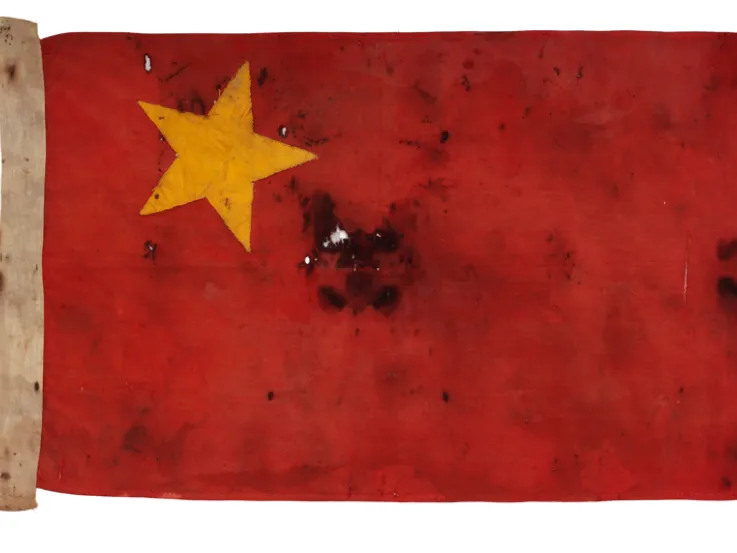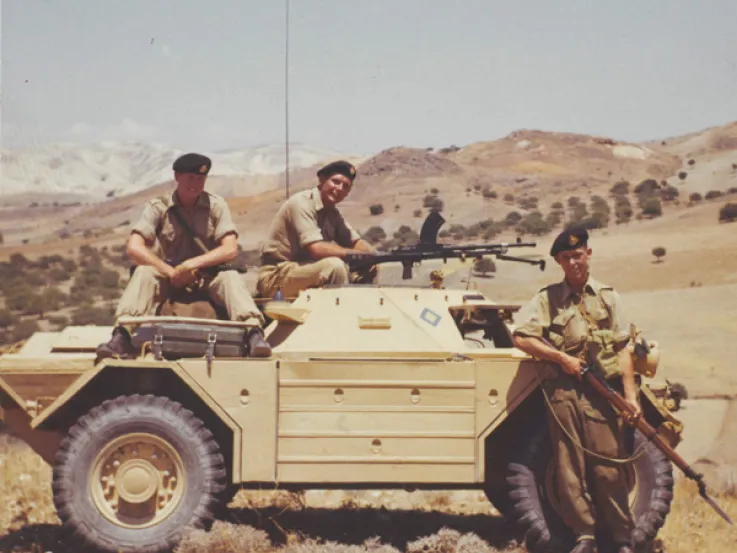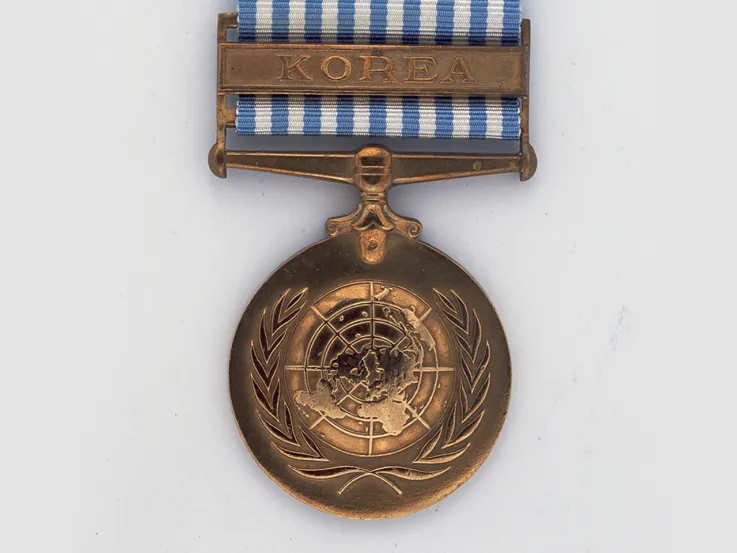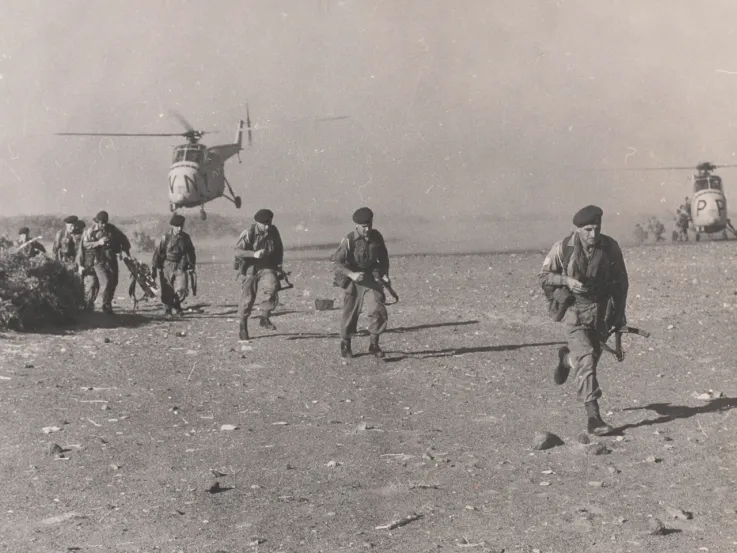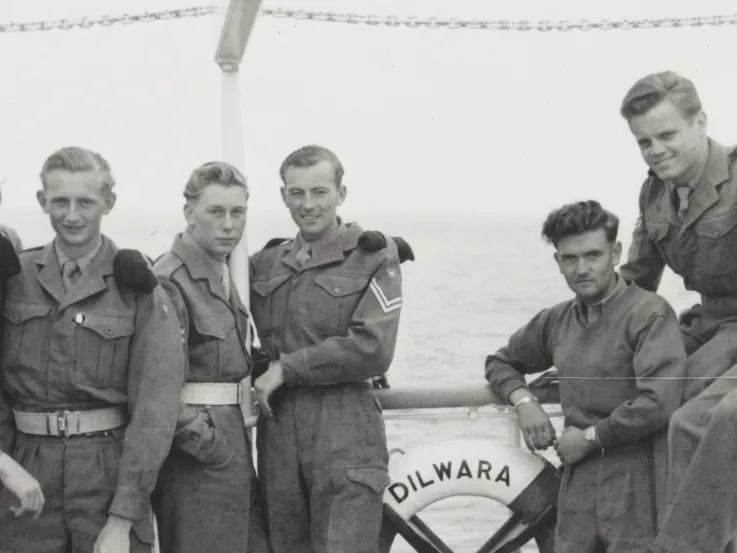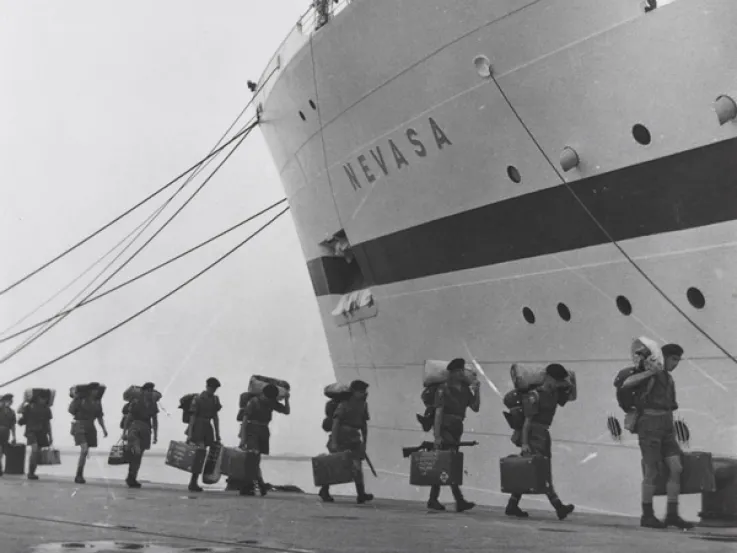Mau Mau uprising
In 1952, elements of the Kenyan Kikuyu tribe, known as the Mau Mau, began a guerrilla campaign against Europeans and fellow Africans.
Although it contained many elements of anti-colonialism, the rising was primarily about land ownership and who was to rule Kenya once the British withdrew. Many Kikuyu had lost land to white settlers during the previous decades.
Poorly armed
Although the Mau Mau murdered a number of white settlers, the vast majority of their victims were fellow Africans. By the end of the emergency, 32 European civilians had died at the hands of the Mau Mau, but so had over 1,800 Africans.
Mau Mau guerrillas may have totalled 25,000, but they had few modern weapons. Some were armed with homemade guns, swords, spears, and bows and arrows. Even so, it took the British more than four years to defeat them.
Emergency
A State of Emergency was declared in October 1952 after the Mau Mau murdered a loyal Kikuyu chief. Despite this, it was quite some time before an effective response could be formulated.
The Kenyan police were few in number and unused to operating in the tribal areas. Meanwhile, the British military garrison in Kenya only consisted of three battalions of the King's African Rifles.
Erskine in command
In June 1953, Lieutenant-General Sir George Erskine was appointed Commander-in-Chief with powers over all security forces in Kenya. The garrison was also reinforced by three more battalions of the King's African Rifles and a brigade of British infantry.
A second brigade was added as the campaign progressed. But the military command in Kenya was slow to learn from the lessons of the Malayan Emergency.
Poor intelligence
At first, the troops were used in small numbers to guard farms and isolated settlements. They also took part in ineffective sweeps through the jungle, while the Royal Air Force (RAF) dropped bombs with little effect. This was largely the result of a lack of intelligence about the Mau Mau's activities.
New tactics
To fix this, Erskine integrated police and military intelligence organisations under a single head, while the authorities began to deprive the Mau Mau of support by addressing some of the Kikuyu's grievances.
Providing medical treatment was one way of winning 'hearts and minds' and gaining useful intelligence.
Home Guard
Many Kikuyu had been intimidated into supporting the Mau Mau. When offered government protection and agrarian reform, they were prepared to inform on the Mau Mau and even fight against them.
A local Kikuyu Home Guard was formed, which eventually totalled 25,000 men. This freed up the security forces for offensive operations. Unfortunately, many members of the Home Guard used violence as a means of controlling the population.

Map of Kenya, 1954
Anvil
In April 1954, the authorities launched Operation Anvil, a massive cordon and search operation in Nairobi. It destroyed Mau Mau strength in the capital and netted over 16,000 suspects.
The information they provided allowed military units to take the offensive against the Mau Mau in a much more effective manner.
‘If we are going to sin, we must sin quietly.’Eric Griffith-Jones, British attorney general in Kenya — 1957
Detention
Many Mau Mau suspects were placed in detention camps. Conditions there were poor, disease was rife and food in short supply.
Maltreatment also included torture and summary executions. The most notorious incident occurring at the Hola camp, where 11 detainees were killed by their African prison warders.
Torture
The Kenya Human Rights Commission has recently alleged that 90,000 Kenyans were executed, tortured or maimed during the crackdown, and that 160,000 people were detained in poor conditions.
In 2011, legal action was taken against the British government to secure compensation for several Kenyans allegedly tortured.
‘One night, they found a track that was being used for supplies so we had the job of laying ambush, we lay there all blooming night... But it was early hours of the morning just breaking daylight and we heard these footsteps… so my mate was on the Bren at that time and I was laying beside him. And they come along with these big loaves on their heads, we didn’t know how many there was, because in the Aberdare forests you were allowed to shoot any black man, if he was black you shoot him because he was a Mau Mau because it was a prohibited area… Anyway he pulled the trigger and there was a clonk, bloody thing jammed, and of course they was gone, you could never get near them, they was gone.’Private Ron Hawkes, Kenya — 1953-54
Prohibited Areas
Government efforts were concentrated against the gangs in the forests around Mount Kenya and the Aberdares. These were designated 'Prohibited Areas', where the security forces operated a shoot-on-sight policy.
Meanwhile, the concentration of the rural population into defended villages forced Mau Mau gangs out of hiding in order to get supplies. By April 1955, the back of the rebellion had been broken. And by the end of the year, Mau Mau strength had been reduced to about 2,000.
Victory
To defeat the remaining hardcore guerrillas the authorities employed 'pseudo-gangs', often consisting of surrendered Mau Mau whose local knowledge proved invaluable.
The rebellion was largely over by the end of 1956, but the Emergency remained in force for another four years as the remaining gang members were hunted down.
Cost
Altogether, around 600 members of the security forces and nearly 2,000 civilians were killed during the Emergency, the vast majority of them African. Over 10,000 Mau Mau died.
However, unofficial figures suggest a much larger number were killed in the counter-insurgency campaign.
The rising had been defeated, but it had taken 10,000 British and African soldiers, 20,000 police and 25,000 Kikuyu Home Guard to do it.
Independence
The revolt, and the way the British dealt with it, boosted the campaign for Kenyan independence, which was finally granted in 1963.
Independent Kenya's first Prime Minister, Jomo Kenyatta, was one of those arrested during the Emergency for his alleged Mau Mau links, even though he was a moderate.














